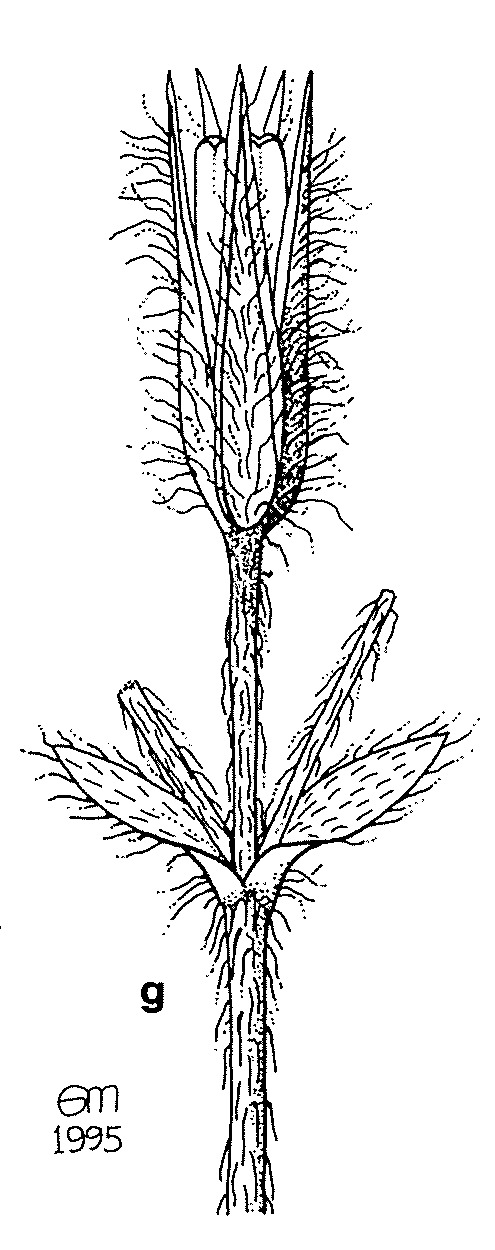Cerastium comatum
Desv. Levantine Mouse-ear ChickweedAnnual with slender, branching taproot; hairs dense, soft, eglandular, 2–3 mm long. Stems erect or ascending, 10–12 cm long. Leaves sessile, obovate-spathulate to ovate-elliptic, 10–14 mm long, 3–7 mm wide, more or less obtuse. Inflorescence profuse, more or less dense; bracts entirely herbaceous. Flowers 5-merous; pedicels about equalling calyx, more or less densely retrorse-villous; calyx densely eglandular-pilose, sepals oblong-anceolate to lanceolate, 5–6 mm long, acute, herbaceous or margins narrowly scarious; petals minutely auriculate at base, c. half the length of sepals, styles 5. Capsule straight, c. 7 mm long, teeth very short, truncate; seeds chestnut-brown, minutely striate-tuberculate, 0.5–0.8 mm diam. Flowers Aug.–Nov.
VVP, Gold, CVU, WPro, HNF. Native to eastern Mediterranean region. An apparently rare weed, confined in Australia to Victoria where recorded from only c. 6 localities.
This taxon has been treated frequently as a subspecies of Cerastium illyricum Ard. but is now considered sufficiently distinct to warrant species rank (Greuter et al. 1984; Sell & Whitehead 1993).
Adams, L.G. (1996). Caryophyllaceae. In: Walsh, N.G.; Entwisle, T.J., Flora of Victoria Vol. 3, Dicotyledons Winteraceae to Myrtaceae, pp. 228–271. Inkata Press, Melbourne.
 Spinning
Spinning

